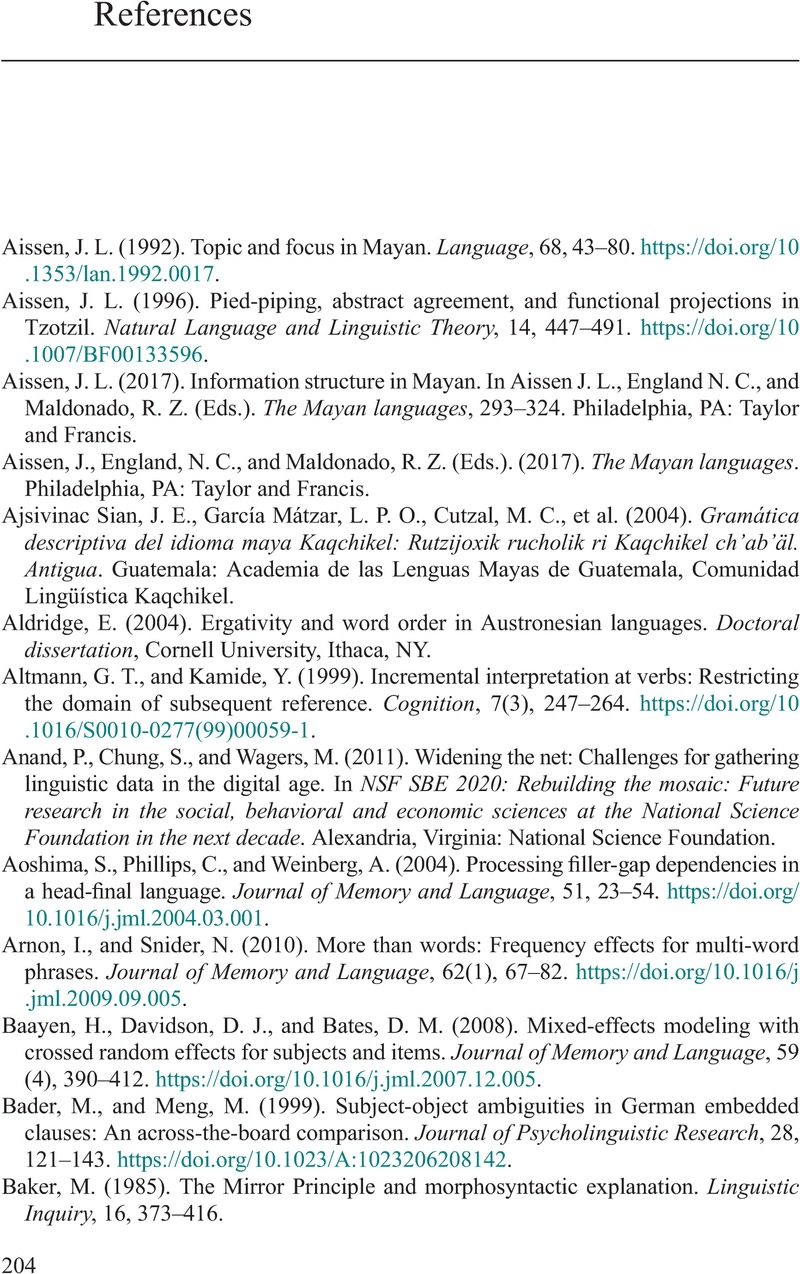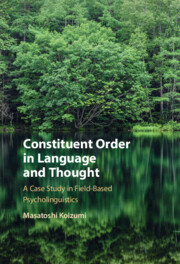Book contents
- Constituent Order in Language and Thought
- Constituent Order in Language and Thought
- Copyright page
- Dedication
- Contents
- Figures
- Tables
- Preface
- Abbreviations
- Chapter 1 Introduction
- Chapter 2 Kaqchikel Mayan
- Chapter 3 Word Order Preference in Sentence Comprehension I: Behavioral Studies
- Chapter 4 Word Order Preference in Sentence Comprehension II: fMRI Studies
- Chapter 5 Word Order Preference in Sentence Comprehension III: ERP Studies without Context
- Chapter 6 Word Order Preference in Sentence Comprehension IV: ERP Studies with Context
- Chapter 7 Basic Word Order in Language and Natural Order of Thought
- Chapter 8 Constituent Order Preference in Event Representation
- Chapter 9 Word Order Preference in Sentence Production I: Production Frequency
- Chapter 10 Word Order Preference in Sentence Production II: Time Course and Cognitive Load
- Chapter 11 Grammatical Processing and Event Apprehension
- Chapter 12 Syntactic Structure of Kaqchikel Revisited
- Chapter 13 Syntax and Processing Load
- Chapter 14 Concluding Remarks
- Book part
- References
- Index
- References
References
Published online by Cambridge University Press: 19 January 2023
- Constituent Order in Language and Thought
- Constituent Order in Language and Thought
- Copyright page
- Dedication
- Contents
- Figures
- Tables
- Preface
- Abbreviations
- Chapter 1 Introduction
- Chapter 2 Kaqchikel Mayan
- Chapter 3 Word Order Preference in Sentence Comprehension I: Behavioral Studies
- Chapter 4 Word Order Preference in Sentence Comprehension II: fMRI Studies
- Chapter 5 Word Order Preference in Sentence Comprehension III: ERP Studies without Context
- Chapter 6 Word Order Preference in Sentence Comprehension IV: ERP Studies with Context
- Chapter 7 Basic Word Order in Language and Natural Order of Thought
- Chapter 8 Constituent Order Preference in Event Representation
- Chapter 9 Word Order Preference in Sentence Production I: Production Frequency
- Chapter 10 Word Order Preference in Sentence Production II: Time Course and Cognitive Load
- Chapter 11 Grammatical Processing and Event Apprehension
- Chapter 12 Syntactic Structure of Kaqchikel Revisited
- Chapter 13 Syntax and Processing Load
- Chapter 14 Concluding Remarks
- Book part
- References
- Index
- References
Summary

- Type
- Chapter
- Information
- Constituent Order in Language and ThoughtA Case Study in Field-Based Psycholinguistics, pp. 204 - 224Publisher: Cambridge University PressPrint publication year: 2023



